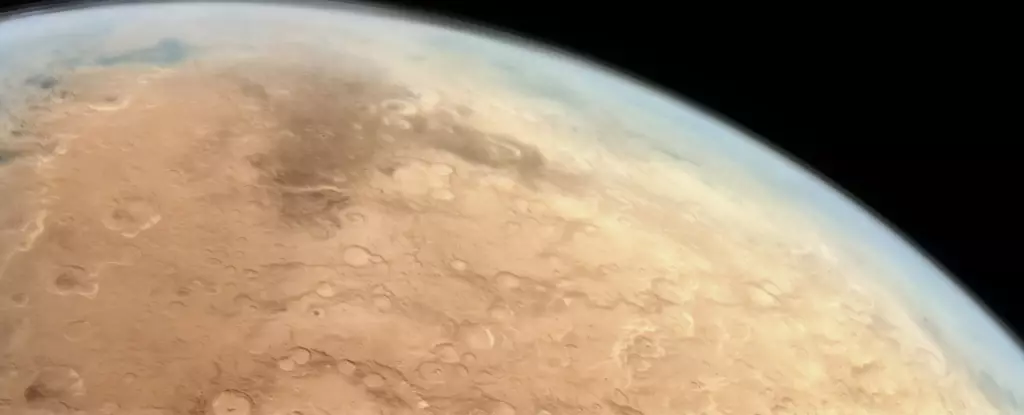Mars has long fascinated humanity as the mysterious neighboring world in our solar system, yet its stark landscape and barren surface starkly contrast Earth’s vibrant biosphere. Despite sharing the same basic ingredients – carbon, oxygen, hydrogen – Mars remains an inhospitable wasteland, a puzzle that continues to challenge scientists. While the presence of ancient riverbeds and dried lakebeds on Mars testify to a wetter, more promising past, the planet today is a cold, arid desert devoid of liquid water on its surface. This discrepancy raises vital questions about the planetary processes that have rendered Mars largely sterile, emphasizing that proximity or similar initial conditions do not guarantee habitability. The critique of Mars’s history reveals the profound influence of geological and atmospheric dynamics – factors that ultimately dictate a planet’s ability to sustain life.
Water’s Fragile Nature and Its Role in Habitability
Liquid water is often regarded as the cornerstone for life, yet its presence – or absence – on planets is dictated by intricate climatic and geophysical factors. Mars’s ancient rivers and lakes suggest that water once flowed freely, but this transient presence was insufficient for fostering long-term biological development. A pivotal discovery made by NASA’s Curiosity rover uncovered carbonate-rich rocks, which hint at historical episodes where atmospheric CO2 was sequestered into rocks, potentially indicating fleeting windows of habitability. However, these episodes were rare and short-lived, creating a planetary milieu that oscillated between brief habitable phases and extended inhospitable eras.
This pattern uncovers a critical flaw in Mars’s environmental architecture: its volcanic activity, the primary mechanism for recycling carbon dioxide into the atmosphere, was weak compared to Earth. Without robust volcanic outgassing, the planet’s atmosphere thinned over time, leading to a loss of greenhouse gases that could sustain a warm, water-rich environment. Consequently, Mars’s climate shifted from possibly habitable to relentlessly cold and dry, making it impossible for liquid water to persist on its surface long enough for life to gain a foothold.
The Climatic Imbalance and the Dead-End of Red Planet Evolution
The scientific consensus suggests that Mars’s climatic evolution was marked by short intervals of warmth and wetness, followed by a prolonged, millennia-spanning desert. During these brief habitable episodes, conditions might have supported microbial life, but the subsequent 100 million-year barren periods proved too extreme for sustained biological survival. Unlike Earth, whose well-balanced carbon cycle maintains a relatively stable climate conducive to life, Mars’s diminished volcanic activity and weak atmospheric greenhouse effect prevented similar atmospheric regulation.
The implications of this are profound: despite the planet’s initial potential, Mars’s inability to maintain a hospitable climate resulted in an ecological dead zone. The planet essentially locked itself into a terminally cold and dry state, where liquid water, and hence life, cannot exist on the surface for extended periods. The possibility that underground water pockets may still host microbial life remains speculative but unconfirmed. This environmental limitation underscores a critical idea; planetary habitability hinges on the delicate interplay of geophysical and atmospheric cycles, which Mars failed to sustain.
What Future Discoveries Might Tell Us About Life’s Cosmic Roots
Upcoming missions to Mars have the potential to overturn current assumptions about the planet’s past. The Perseverance rover’s discovery of carbonate minerals at the edges of ancient lakebeds hints that Mars might have experienced fleeting habitable conditions, but confirming this requires direct sampling. The scientific community is racing to retrieve Martian rocks for analysis back on Earth, where more sophisticated tools can scrutinize their composition and origin.
The stakes extend far beyond Mars. These investigations could reveal whether life ever took hold on our neighboring world. The presence of microbial life in ancient Martian environments would suggest that biological processes are relatively easy to initiate on planets with basic ingredients, possibly increasing the likelihood of extraterrestrial life elsewhere in the universe. Conversely, if Mars’s history proved barren of even microbial life, it could imply that the emergence of life is a rare cosmic event, potentially limiting the prevalence of life-supporting planets.
In this broader context, Mars serves as a natural laboratory for understanding planetary habitability and the cosmic factors that favor or hinder the emergence of life. The ongoing quest to decipher its ancient environment not only aims to answer whether we are alone in the universe but also challenges us to reevaluate what it truly takes for a planet to sustain life.


Leave a Reply